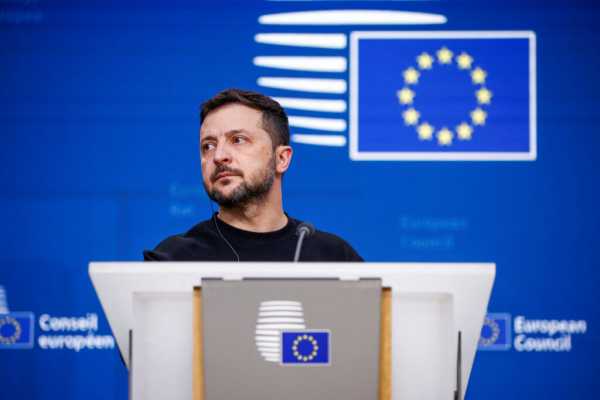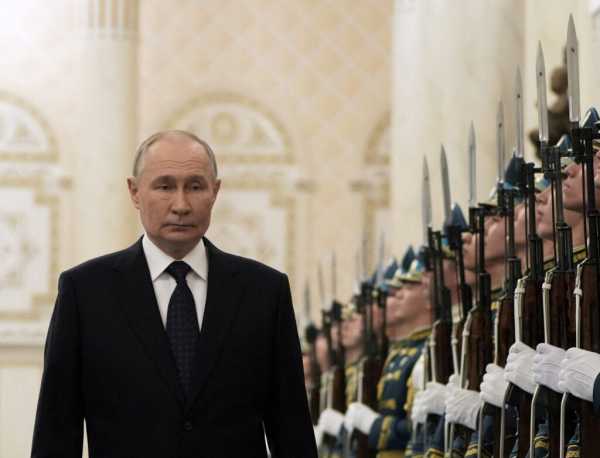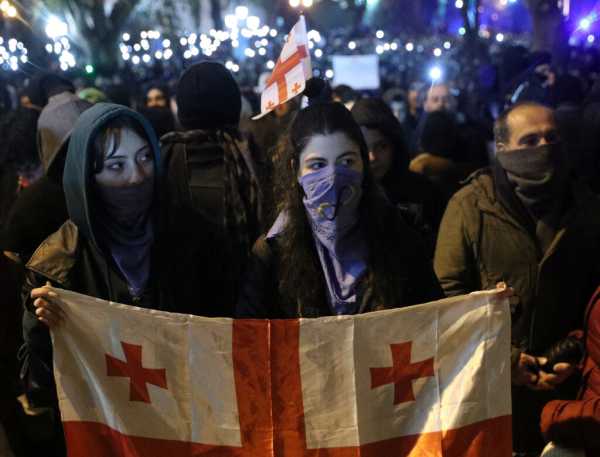
Ukraine has long identified membership in NATO and the European Union as its twin geopolitical goals as it seeks to achieve a historic turn toward the West. With the prospect of a NATO invitation seemingly remote while the war with Russia continues, the Ukrainian government will hope to move further along the path to EU integration in 2025. Progress on the country’s EU bid is realistic, but Kyiv is likely to face a number of hurdles in the coming year, both domestically and internationally.
Ukraine’s aspirations to join the EU first began to take shape after the Orange Revolution of 2004. But the European Union initially showed little sign of sharing Ukraine’s enthusiasm for closer ties. Instead, it took Brussels and Kyiv nine years to agree on the terms of an Association Agreement aimed at taking relations to the next level.
When the Association Agreement was finally ready to be signed in late 2013, Russia intervened and pressured Ukrainian President Viktor Yanukovych to withdraw. This led to protests in Kyiv, which then escalated into a popular uprising after violent attempts to break up a student rally in support of EU integration. The Revolution of Dignity, as it became known, reached a bloody climax in February 2014, when dozens of protesters were killed in central Kyiv. Yanukovych fled to Russia after the killings.
Yanukovych’s successor, Petro Poroshenko, signed the EU Association Agreement a few months later. By then, Putin had already decided to intervene militarily, seizing control of Ukraine’s Crimean peninsula and unleashing war in eastern Ukraine. This marked the beginning of Russia’s undeclared war against Ukraine, which would eventually lead to a full-scale invasion in 2022.
As Russian troops closed in on Kyiv in the early days of the February 2022 invasion, Ukrainian President Volodymyr Zelensky formally submitted his application for EU membership, a gesture that underscored the historic significance of the country’s European choice at a time when Moscow was openly trying to force Ukraine back into the Kremlin’s orbit for good.
Amid the horrors of the largest invasion of Europe since World War II, EU officials and individual member states have also recognised the importance of Ukraine’s European integration. In June 2022, Ukraine was granted EU candidate status . This was followed in late 2023 by a decision to open EU accession talks, which will begin in June 2024.
The significant progress made since 2022 has led to growing confidence in Ukraine that EU membership is a realistic goal for the country. It is certainly a popular option. The number of Ukrainians who support EU membership has been steadily increasing since the 2014 Revolution of Dignity, and recent polls consistently indicate that more than three-quarters of Ukrainians would like to see the country part of the EU.
This overwhelming public support means that there is unlikely to be a lack of political will in Kyiv to adopt policies that will bring Ukraine closer to EU membership. However, the path forward is complex and demanding. Effective governance reforms, particularly in the fight against corruption, are essential to Ukraine’s EU membership aspirations. Meeting EU legal standards in 35 policy areas, including taxation, energy and judicial reform, will also require a monumental effort.
Ukraine will be hoping for an accelerated period of progress on EU integration when Poland takes over the six-month rotating Presidency of the European Council in January 2025. This will follow on from Hungary’s presidency, which has brought little benefit to Ukraine, and should create favourable conditions for constructive engagement on key reform issues.
Looking ahead, Ukraine’s bid to join the EU is likely to face additional hurdles and headwinds as the prospect of membership approaches. Ukraine’s agricultural prowess, in particular, should present both opportunities and challenges. Ukraine is already a major exporter of agricultural products to the EU. If the country were to join the single market and remove existing barriers, including tariffs and quotas, it would potentially overwhelm European markets.
Increasing Ukrainian grain exports to the EU from 2022 has already become a contentious issue in many EU member states, sparking protests and border blockades. This opposition will only intensify in the coming years, as EU farmers put pressure on their governments to act in their interests and prevent Ukraine from gaining unrestricted access.
Labour flows from Ukraine could also raise some concerns among existing EU members. While millions of Ukrainians already live and work in the EU, including many with refugee status, membership could lead to an influx similar to the large numbers of Poles who moved to other EU member states after Poland joined the EU in 2004. Transition periods may be needed to address these concerns.
How soon can Ukraine achieve EU membership? EU Ambassador to Ukraine Katarina Mathernová expressed confidence that Ukraine could join the EU by the end of the decade. This was confirmed by EU Enlargement Commissioner Olivér Várhelyi, who said in October that Ukraine could potentially gain membership by 2029 if it completed the necessary reforms.
Meanwhile, Ukrainian President Volodymyr Zelensky has stressed the country’s determination to achieve rapid integration. While there is strong support for Ukraine’s membership bid in most EU capitals, the accession process is tough and requires unanimous approval. Further progress is likely in 2025, but the path to full membership remains long and difficult.
Kateryna Odarchenko is a partner at SIC Group Ukraine.
Source: Source



